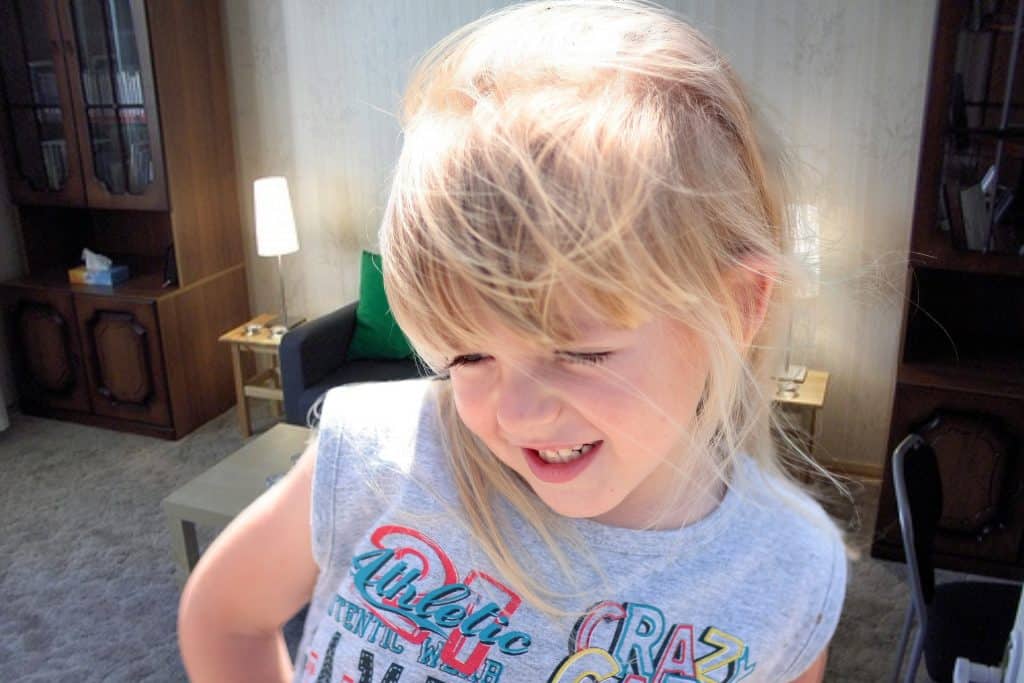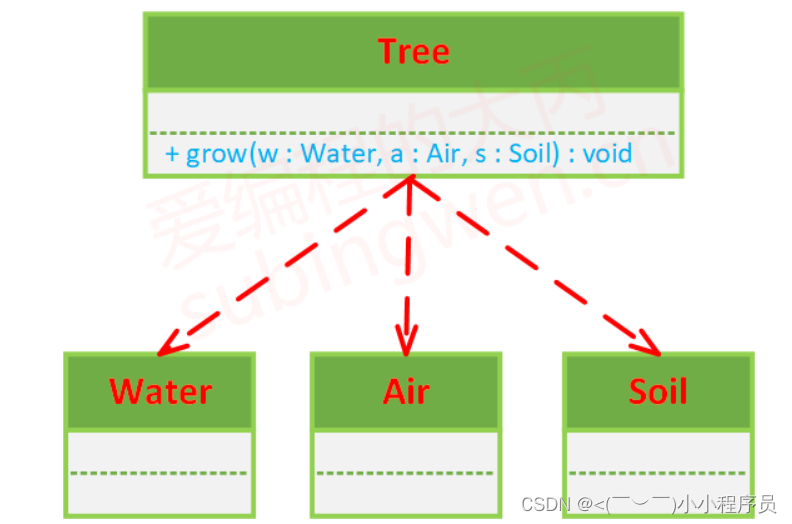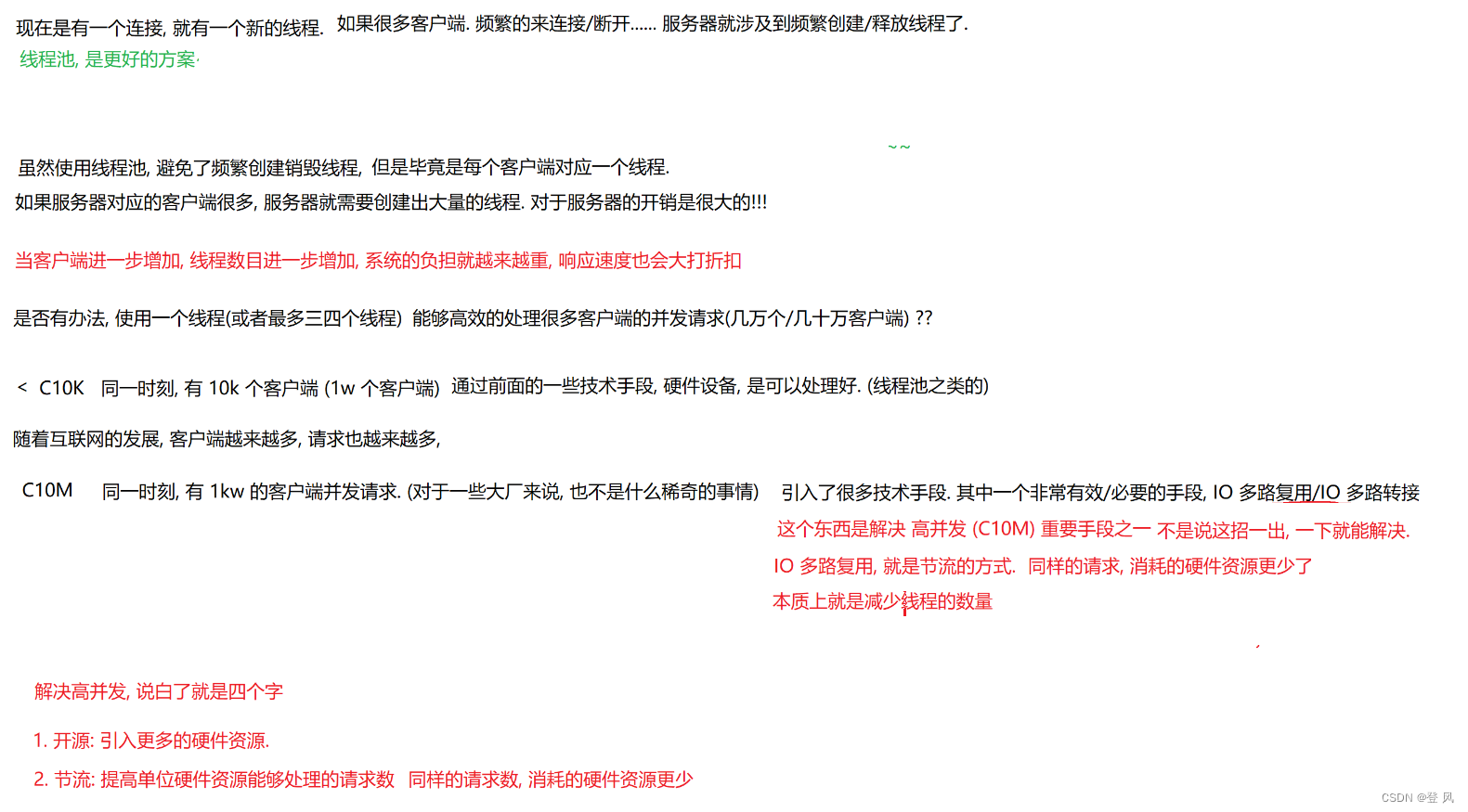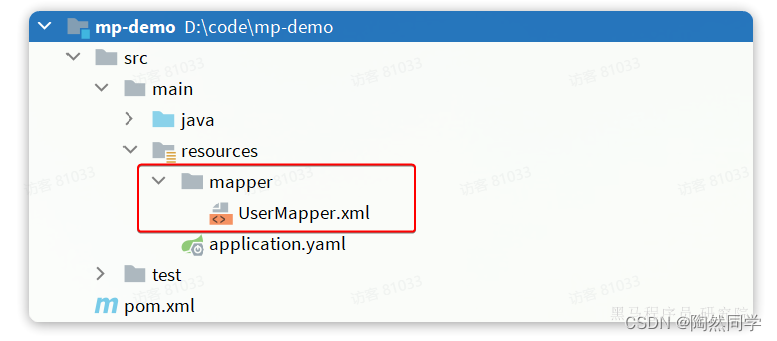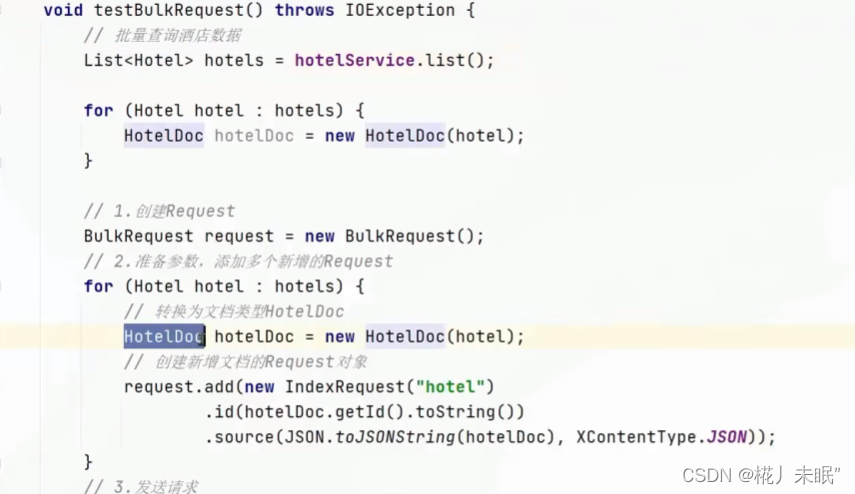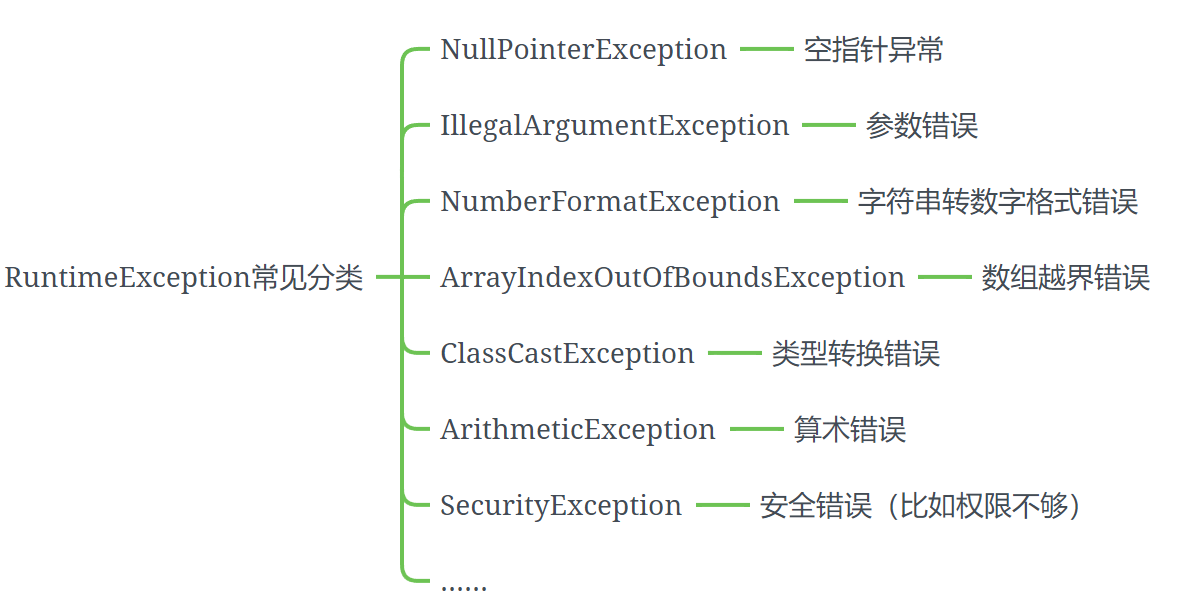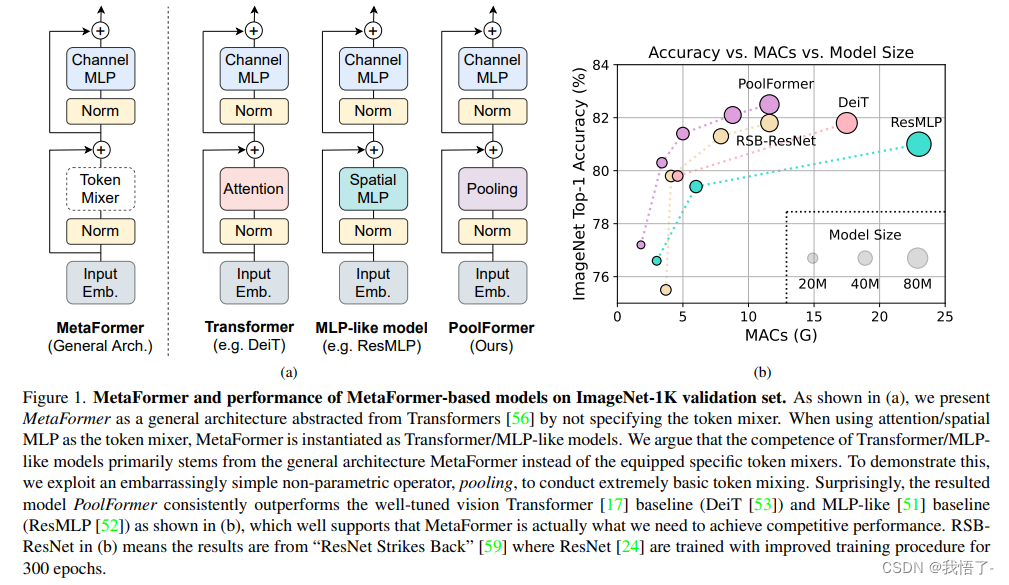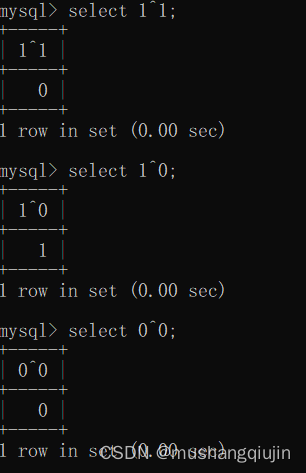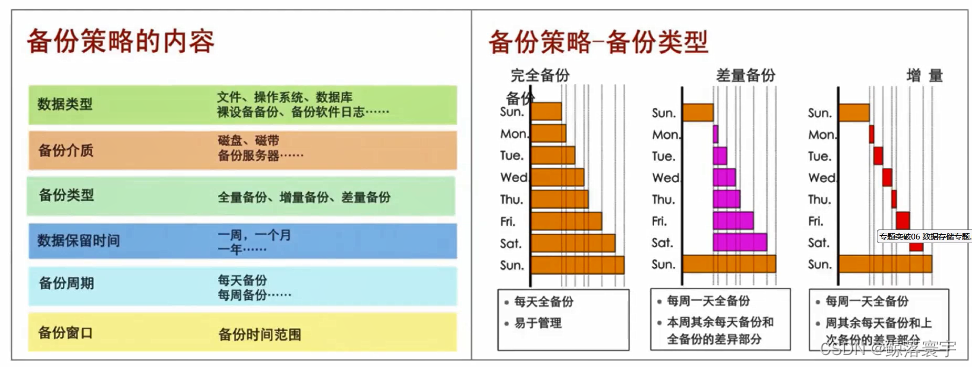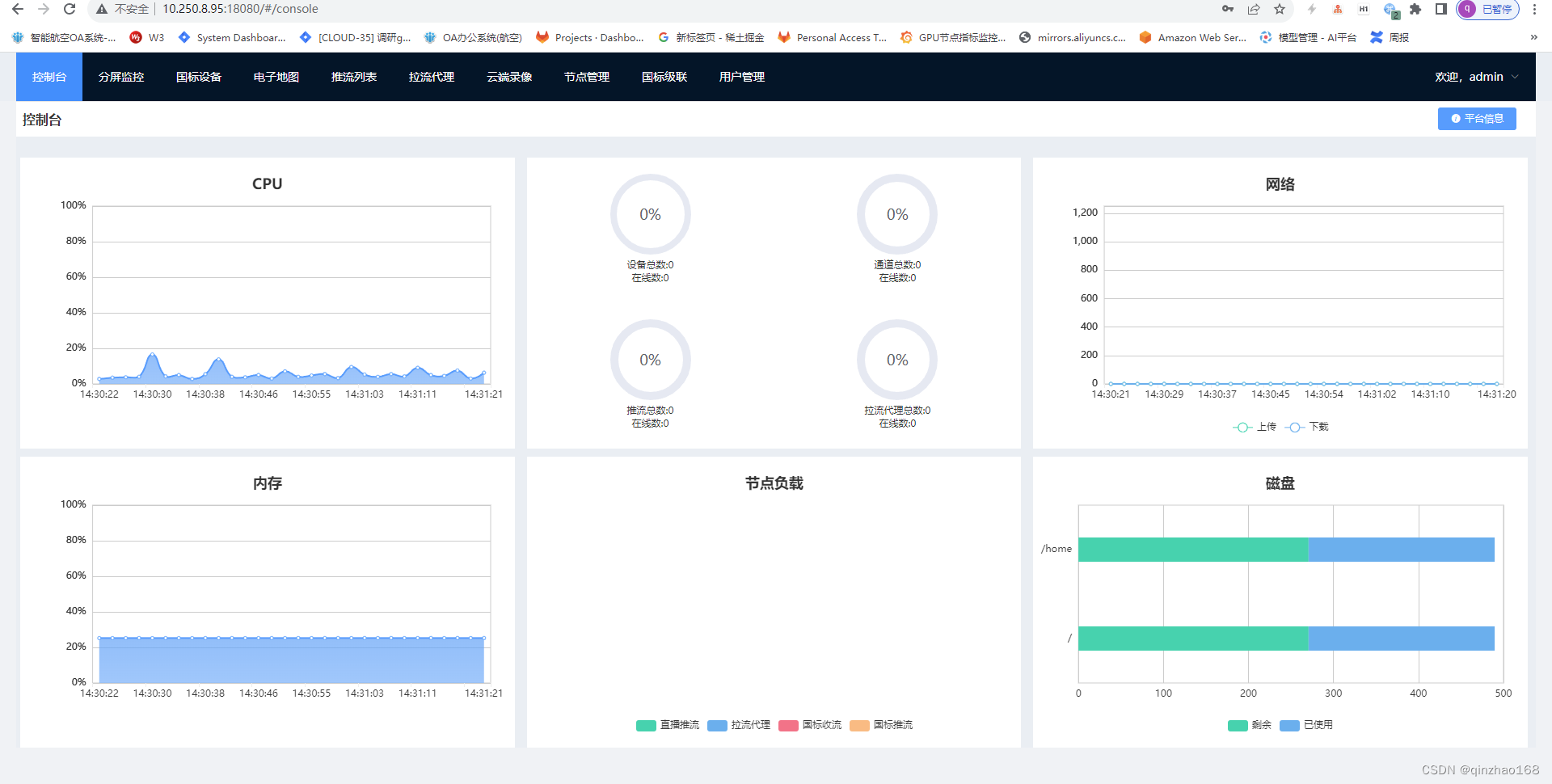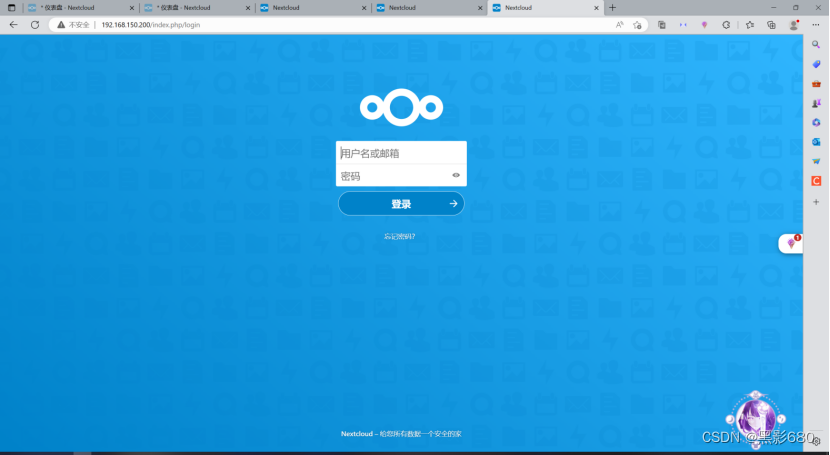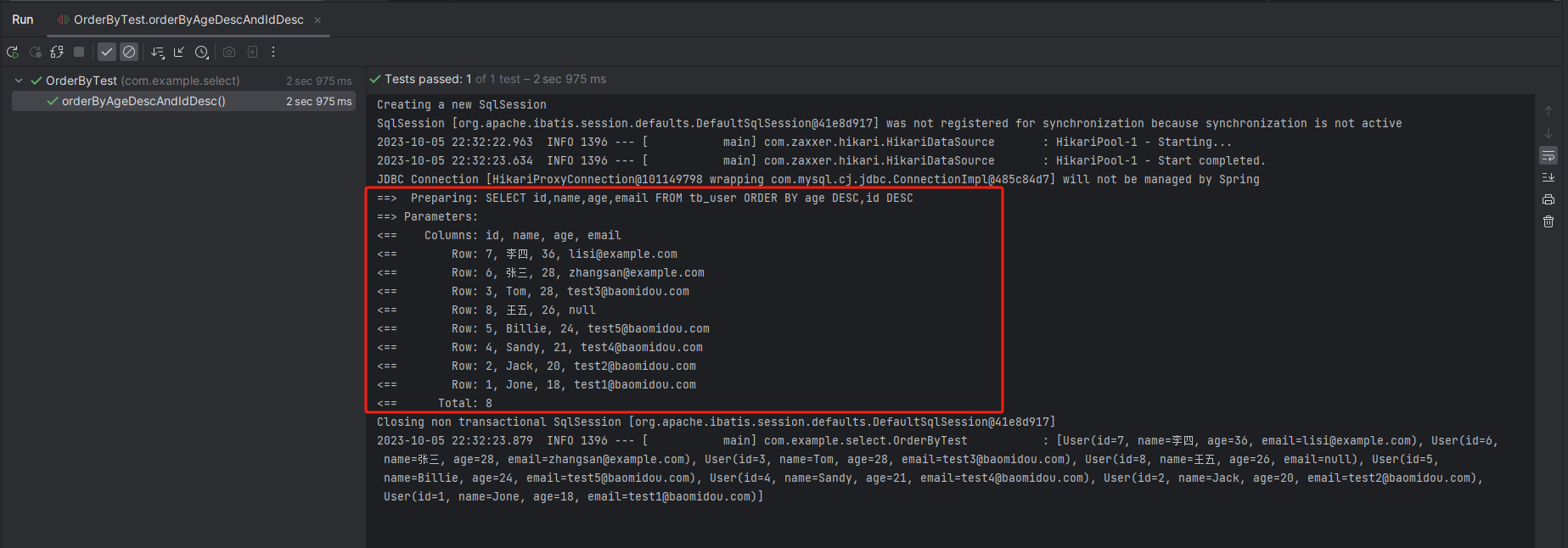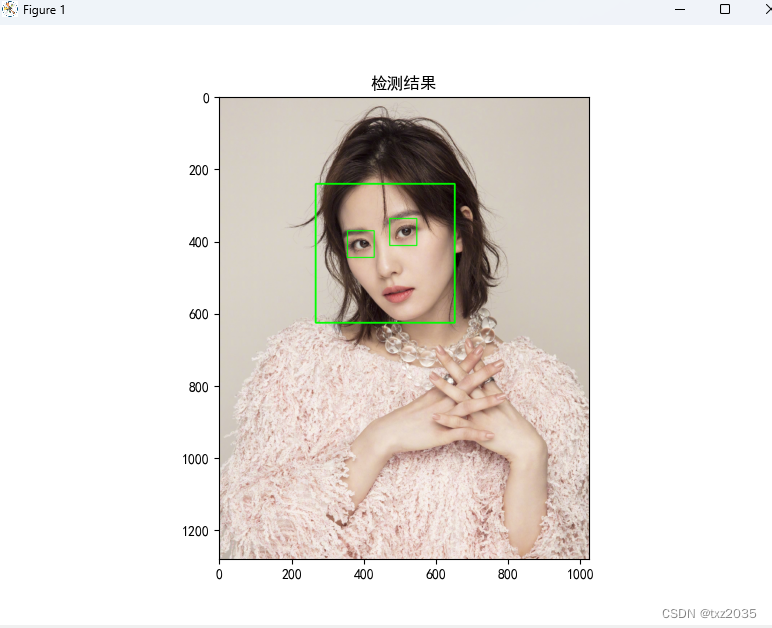FocalNet
近些年,Transformers在自然语言处理、图像分类、目标检测和图像分割上均取得了较大的成功,归根结底是自注意力(SA :self-attention)起到了关键性的作用,因此能够支持输入信息的全局交互。但是由于视觉tokens的大量存在,自注意力的计算复杂度高,尤其是在高分辨的输入时,因此针对该缺陷,论文《Focal Modulation Networks》提出了FocalNet网络。
论文地址:Focal Modulation Networks
原理:使用新提出的Focal Modulation替代之前的SA自注意力模块,解耦聚合和单个查询过程,先将查询周围的上下文信息进行聚合,再根据聚合信息获取查询结果。如下图所示,图中红色表示query token。对比来看,Window-wise Self-Attention (SA)利用周围的token(橙色)来捕获空间上下文信息;在此基础上,Focal Attention扩大了感受野,还可以使用更远的summarized tokens(蓝色);而Focal Modulation更为强大,先利用诸如depth-wise convolution的方式将不同粒度级别的空间上下文编码为summarized tokens (橙色、绿色和蓝色),再根据查询内容,选择性的将这些summarized tokens融合为query token。而本文新提出的方式便是进行轻量化,将聚合和单个查询进行解耦,减少计算量。
在前两者中,绿色和紫色箭头分别代表注意力交互和基于查询的聚合,但是都存在一个缺陷,即:均需要涉及大量的交互和聚合操作。而Focal Modulation计算过程得到大量简化。
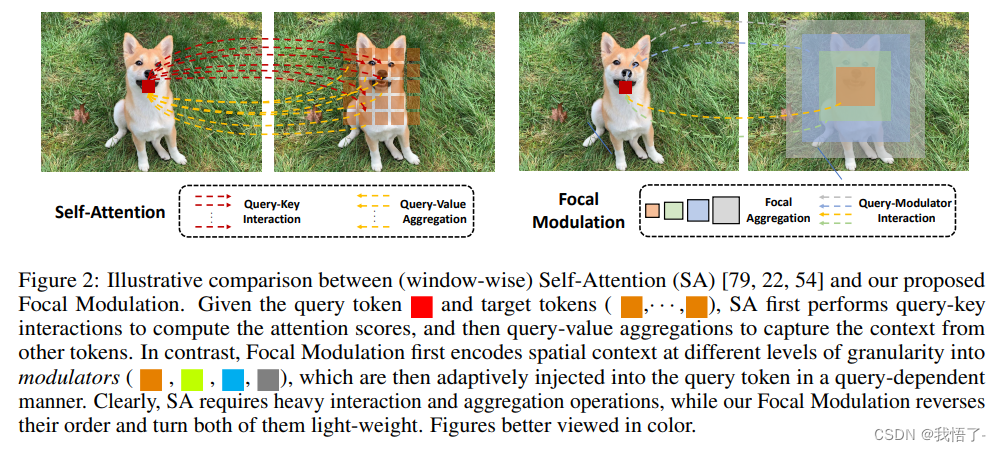
FocalNet代码实现
# --------------------------------------------------------
# FocalNets -- Focal Modulation Networks
# Copyright (c) 2022 Microsoft
# Licensed under The MIT License [see LICENSE for details]
# Written by Jianwei Yang (jianwyan@microsoft.com)
# --------------------------------------------------------
import numpy as np
import torch
import torch.nn as nn
import torch.nn.functional as F
import torch.utils.checkpoint as checkpoint
from timm.models.layers import DropPath, to_2tuple, trunc_normal_
__all__ = ['focalnet_tiny_srf', 'focalnet_tiny_lrf', 'focalnet_small_srf', 'focalnet_small_lrf', 'focalnet_base_srf', 'focalnet_base_lrf', 'focalnet_large_fl3', 'focalnet_large_fl4', 'focalnet_xlarge_fl3', 'focalnet_xlarge_fl4', 'focalnet_huge_fl3', 'focalnet_huge_fl4']
def update_weight(model_dict, weight_dict):
idx, temp_dict = 0, {}
for k, v in weight_dict.items():
if k in model_dict.keys() and np.shape(model_dict[k]) == np.shape(v):
temp_dict[k] = v
idx += 1
model_dict.update(temp_dict)
print(f'loading weights... {idx}/{len(model_dict)} items')
return model_dict
class Mlp(nn.Module):
def __init__(self, in_features, hidden_features=None, out_features=None, act_layer=nn.GELU, drop=0.):
super().__init__()
out_features = out_features or in_features
hidden_features = hidden_features or in_features
self.fc1 = nn.Linear(in_features, hidden_features)
self.act = act_layer()
self.fc2 = nn.Linear(hidden_features, out_features)
self.drop = nn.Dropout(drop)
def forward(self, x):
x = self.fc1(x)
x = self.act(x)
x = self.drop(x)
x = self.fc2(x)
x = self.drop(x)
return x
class FocalModulation(nn.Module):
def __init__(self, dim, focal_window, focal_level, focal_factor=2, bias=True, proj_drop=0., use_postln_in_modulation=False, normalize_modulator=False):
super().__init__()
self.dim = dim
self.focal_window = focal_window
self.focal_level = focal_level
self.focal_factor = focal_factor
self.use_postln_in_modulation = use_postln_in_modulation
self.normalize_modulator = normalize_modulator
self.f = nn.Linear(dim, 2*dim + (self.focal_level+1), bias=bias)
self.h = nn.Conv2d(dim, dim, kernel_size=1, stride=1, bias=bias)
self.act = nn.GELU()
self.proj = nn.Linear(dim, dim)
self.proj_drop = nn.Dropout(proj_drop)
self.focal_layers = nn.ModuleList()
self.kernel_sizes = []
for k in range(self.focal_level):
kernel_size = self.focal_factor*k + self.focal_window
self.focal_layers.append(
nn.Sequential(
nn.Conv2d(dim, dim, kernel_size=kernel_size, stride=1,
groups=dim, padding=kernel_size//2, bias=False),
nn.GELU(),
)
)
self.kernel_sizes.append(kernel_size)
if self.use_postln_in_modulation:
self.ln = nn.LayerNorm(dim)
def forward(self, x):
"""
Args:
x: input features with shape of (B, H, W, C)
"""
C = x.shape[-1]
# pre linear projection
x = self.f(x).permute(0, 3, 1, 2).contiguous()
q, ctx, gates = torch.split(x, (C, C, self.focal_level+1), 1)
# context aggreation
ctx_all = 0
for l in range(self.focal_level):
ctx = self.focal_layers[l](ctx)
ctx_all = ctx_all + ctx * gates[:, l:l+1]
ctx_global = self.act(ctx.mean(2, keepdim=True).mean(3, keepdim=True))
ctx_all = ctx_all + ctx_global * gates[:,self.focal_level:]
# normalize context
if self.normalize_modulator:
ctx_all = ctx_all / (self.focal_level+1)
# focal modulation
modulator = self.h(ctx_all)
x_out = q * modulator
x_out = x_out.permute(0, 2, 3, 1).contiguous()
if self.use_postln_in_modulation:
x_out = self.ln(x_out)
# post linear porjection
x_out = self.proj(x_out)
x_out = self.proj_drop(x_out)
return x_out
def extra_repr(self) -> str:
return f'dim={self.dim}'
def flops(self, N):
# calculate flops for 1 window with token length of N
flops = 0
flops += N * self.dim * (self.dim * 2 + (self.focal_level+1))
# focal convolution
for k in range(self.focal_level):
flops += N * (self.kernel_sizes[k]**2+1) * self.dim
# global gating
flops += N * 1 * self.dim
# self.linear
flops += N * self.dim * (self.dim + 1)
# x = self.proj(x)
flops += N * self.dim * self.dim
return flops
class FocalNetBlock(nn.Module):
r""" Focal Modulation Network Block.
Args:
dim (int): Number of input channels.
input_resolution (tuple[int]): Input resulotion.
mlp_ratio (float): Ratio of mlp hidden dim to embedding dim.
drop (float, optional): Dropout rate. Default: 0.0
drop_path (float, optional): Stochastic depth rate. Default: 0.0
act_layer (nn.Module, optional): Activation layer. Default: nn.GELU
norm_layer (nn.Module, optional): Normalization layer. Default: nn.LayerNorm
focal_level (int): Number of focal levels.
focal_window (int): Focal window size at first focal level
use_layerscale (bool): Whether use layerscale
layerscale_value (float): Initial layerscale value
use_postln (bool): Whether use layernorm after modulation
"""
def __init__(self, dim, input_resolution, mlp_ratio=4., drop=0., drop_path=0.,
act_layer=nn.GELU, norm_layer=nn.LayerNorm,
focal_level=1, focal_window=3,
use_layerscale=False, layerscale_value=1e-4,
use_postln=False, use_postln_in_modulation=False,
normalize_modulator=False):
super().__init__()
self.dim = dim
self.input_resolution = input_resolution
self.mlp_ratio = mlp_ratio
self.focal_window = focal_window
self.focal_level = focal_level
self.use_postln = use_postln
self.norm1 = norm_layer(dim)
self.modulation = FocalModulation(
dim, proj_drop=drop, focal_window=focal_window, focal_level=self.focal_level,
use_postln_in_modulation=use_postln_in_modulation, normalize_modulator=normalize_modulator
)
self.drop_path = DropPath(drop_path) if drop_path > 0. else nn.Identity()
self.norm2 = norm_layer(dim)
mlp_hidden_dim = int(dim * mlp_ratio)
self.mlp = Mlp(in_features=dim, hidden_features=mlp_hidden_dim, act_layer=act_layer, drop=drop)
self.gamma_1 = 1.0
self.gamma_2 = 1.0
if use_layerscale:
self.gamma_1 = nn.Parameter(layerscale_value * torch.ones((dim)), requires_grad=True)
self.gamma_2 = nn.Parameter(layerscale_value * torch.ones((dim)), requires_grad=True)
self.H = None
self.W = None
def forward(self, x):
H, W = self.H, self.W
B, L, C = x.shape
shortcut = x
# Focal Modulation
x = x if self.use_postln else self.norm1(x)
x = x.view(B, H, W, C)
x = self.modulation(x).view(B, H * W, C)
x = x if not self.use_postln else self.norm1(x)
# FFN
x = shortcut + self.drop_path(self.gamma_1 * x)
x = x + self.drop_path(self.gamma_2 * (self.norm2(self.mlp(x)) if self.use_postln else self.mlp(self.norm2(x))))
return x
def extra_repr(self) -> str:
return f"dim={self.dim}, input_resolution={self.input_resolution}, " \
f"mlp_ratio={self.mlp_ratio}"
def flops(self):
flops = 0
H, W = self.input_resolution
# norm1
flops += self.dim * H * W
# W-MSA/SW-MSA
flops += self.modulation.flops(H*W)
# mlp
flops += 2 * H * W * self.dim * self.dim * self.mlp_ratio
# norm2
flops += self.dim * H * W
return flops
class BasicLayer(nn.Module):
""" A basic Focal Transformer layer for one stage.
Args:
dim (int): Number of input channels.
input_resolution (tuple[int]): Input resolution.
depth (int): Number of blocks.
window_size (int): Local window size.
mlp_ratio (float): Ratio of mlp hidden dim to embedding dim.
qkv_bias (bool, optional): If True, add a learnable bias to query, key, value. Default: True
qk_scale (float | None, optional): Override default qk scale of head_dim ** -0.5 if set.
drop (float, optional): Dropout rate. Default: 0.0
drop_path (float | tuple[float], optional): Stochastic depth rate. Default: 0.0
norm_layer (nn.Module, optional): Normalization layer. Default: nn.LayerNorm
downsample (nn.Module | None, optional): Downsample layer at the end of the layer. Default: None
use_checkpoint (bool): Whether to use checkpointing to save memory. Default: False.
focal_level (int): Number of focal levels
focal_window (int): Focal window size at first focal level
use_layerscale (bool): Whether use layerscale
layerscale_value (float): Initial layerscale value
use_postln (bool): Whether use layernorm after modulation
"""
def __init__(self, dim, out_dim, input_resolution, depth,
mlp_ratio=4., drop=0., drop_path=0., norm_layer=nn.LayerNorm,
downsample=None, use_checkpoint=False,
focal_level=1, focal_window=1,
use_conv_embed=False,
use_layerscale=False, layerscale_value=1e-4,
use_postln=False,
use_postln_in_modulation=False,
normalize_modulator=False):
super().__init__()
self.dim = dim
self.input_resolution = input_resolution
self.depth = depth
self.use_checkpoint = use_checkpoint
# build blocks
self.blocks = nn.ModuleList([
FocalNetBlock(
dim=dim,
input_resolution=input_resolution,
mlp_ratio=mlp_ratio,
drop=drop,
drop_path=drop_path[i] if isinstance(drop_path, list) else drop_path,
norm_layer=norm_layer,
focal_level=focal_level,
focal_window=focal_window,
use_layerscale=use_layerscale,
layerscale_value=layerscale_value,
use_postln=use_postln,
use_postln_in_modulation=use_postln_in_modulation,
normalize_modulator=normalize_modulator,
)
for i in range(depth)])
if downsample is not None:
self.downsample = downsample(
img_size=input_resolution,
patch_size=2,
in_chans=dim,
embed_dim=out_dim,
use_conv_embed=use_conv_embed,
norm_layer=norm_layer,
is_stem=False
)
else:
self.downsample = None
def forward(self, x, H, W):
for blk in self.blocks:
blk.H, blk.W = H, W
if self.use_checkpoint:
x = checkpoint.checkpoint(blk, x)
else:
x = blk(x)
if self.downsample is not None:
x = x.transpose(1, 2).reshape(x.shape[0], -1, H, W)
x, Ho, Wo = self.downsample(x)
else:
Ho, Wo = H, W
return x, Ho, Wo
def extra_repr(self) -> str:
return f"dim={self.dim}, input_resolution={self.input_resolution}, depth={self.depth}"
def flops(self):
flops = 0
for blk in self.blocks:
flops += blk.flops()
if self.downsample is not None:
flops += self.downsample.flops()
return flops
class PatchEmbed(nn.Module):
r""" Image to Patch Embedding
Args:
img_size (int): Image size. Default: 224.
patch_size (int): Patch token size. Default: 4.
in_chans (int): Number of input image channels. Default: 3.
embed_dim (int): Number of linear projection output channels. Default: 96.
norm_layer (nn.Module, optional): Normalization layer. Default: None
"""
def __init__(self, img_size=(224, 224), patch_size=4, in_chans=3, embed_dim=96, use_conv_embed=False, norm_layer=None, is_stem=False):
super().__init__()
patch_size = to_2tuple(patch_size)
patches_resolution = [img_size[0] // patch_size[0], img_size[1] // patch_size[1]]
self.img_size = img_size
self.patch_size = patch_size
self.patches_resolution = patches_resolution
self.num_patches = patches_resolution[0] * patches_resolution[1]
self.in_chans = in_chans
self.embed_dim = embed_dim
if use_conv_embed:
# if we choose to use conv embedding, then we treat the stem and non-stem differently
if is_stem:
kernel_size = 7; padding = 2; stride = 4
else:
kernel_size = 3; padding = 1; stride = 2
self.proj = nn.Conv2d(in_chans, embed_dim, kernel_size=kernel_size, stride=stride, padding=padding)
else:
self.proj = nn.Conv2d(in_chans, embed_dim, kernel_size=patch_size, stride=patch_size)
if norm_layer is not None:
self.norm = norm_layer(embed_dim)
else:
self.norm = None
def forward(self, x):
B, C, H, W = x.shape
x = self.proj(x)
H, W = x.shape[2:]
x = x.flatten(2).transpose(1, 2) # B Ph*Pw C
if self.norm is not None:
x = self.norm(x)
return x, H, W
def flops(self):
Ho, Wo = self.patches_resolution
flops = Ho * Wo * self.embed_dim * self.in_chans * (self.patch_size[0] * self.patch_size[1])
if self.norm is not None:
flops += Ho * Wo * self.embed_dim
return flops
class FocalNet(nn.Module):
r""" Focal Modulation Networks (FocalNets)
Args:
img_size (int | tuple(int)): Input image size. Default 224
patch_size (int | tuple(int)): Patch size. Default: 4
in_chans (int): Number of input image channels. Default: 3
num_classes (int): Number of classes for classification head. Default: 1000
embed_dim (int): Patch embedding dimension. Default: 96
depths (tuple(int)): Depth of each Focal Transformer layer.
mlp_ratio (float): Ratio of mlp hidden dim to embedding dim. Default: 4
drop_rate (float): Dropout rate. Default: 0
drop_path_rate (float): Stochastic depth rate. Default: 0.1
norm_layer (nn.Module): Normalization layer. Default: nn.LayerNorm.
patch_norm (bool): If True, add normalization after patch embedding. Default: True
use_checkpoint (bool): Whether to use checkpointing to save memory. Default: False
focal_levels (list): How many focal levels at all stages. Note that this excludes the finest-grain level. Default: [1, 1, 1, 1]
focal_windows (list): The focal window size at all stages. Default: [7, 5, 3, 1]
use_conv_embed (bool): Whether use convolutional embedding. We noted that using convolutional embedding usually improve the performance, but we do not use it by default. Default: False
use_layerscale (bool): Whether use layerscale proposed in CaiT. Default: False
layerscale_value (float): Value for layer scale. Default: 1e-4
use_postln (bool): Whether use layernorm after modulation (it helps stablize training of large models)
"""
def __init__(self,
img_size=224,
patch_size=4,
in_chans=3,
num_classes=1000,
embed_dim=96,
depths=[2, 2, 6, 2],
mlp_ratio=4.,
drop_rate=0.,
drop_path_rate=0.1,
norm_layer=nn.LayerNorm,
patch_norm=True,
use_checkpoint=False,
focal_levels=[2, 2, 2, 2],
focal_windows=[3, 3, 3, 3],
use_conv_embed=False,
use_layerscale=False,
layerscale_value=1e-4,
use_postln=False,
use_postln_in_modulation=False,
normalize_modulator=False,
**kwargs):
super().__init__()
self.num_layers = len(depths)
embed_dim = [embed_dim * (2 ** i) for i in range(self.num_layers)]
self.num_classes = num_classes
self.embed_dim = embed_dim
self.patch_norm = patch_norm
self.num_features = embed_dim[-1]
self.mlp_ratio = mlp_ratio
# split image into patches using either non-overlapped embedding or overlapped embedding
self.patch_embed = PatchEmbed(
img_size=to_2tuple(img_size),
patch_size=patch_size,
in_chans=in_chans,
embed_dim=embed_dim[0],
use_conv_embed=use_conv_embed,
norm_layer=norm_layer if self.patch_norm else None,
is_stem=True)
num_patches = self.patch_embed.num_patches
patches_resolution = self.patch_embed.patches_resolution
self.patches_resolution = patches_resolution
self.pos_drop = nn.Dropout(p=drop_rate)
# stochastic depth
dpr = [x.item() for x in torch.linspace(0, drop_path_rate, sum(depths))] # stochastic depth decay rule
# build layers
self.layers = nn.ModuleList()
for i_layer in range(self.num_layers):
layer = BasicLayer(dim=embed_dim[i_layer],
out_dim=embed_dim[i_layer+1] if (i_layer < self.num_layers - 1) else None,
input_resolution=(patches_resolution[0] // (2 ** i_layer),
patches_resolution[1] // (2 ** i_layer)),
depth=depths[i_layer],
mlp_ratio=self.mlp_ratio,
drop=drop_rate,
drop_path=dpr[sum(depths[:i_layer]):sum(depths[:i_layer + 1])],
norm_layer=norm_layer,
downsample=PatchEmbed if (i_layer < self.num_layers - 1) else None,
focal_level=focal_levels[i_layer],
focal_window=focal_windows[i_layer],
use_conv_embed=use_conv_embed,
use_checkpoint=use_checkpoint,
use_layerscale=use_layerscale,
layerscale_value=layerscale_value,
use_postln=use_postln,
use_postln_in_modulation=use_postln_in_modulation,
normalize_modulator=normalize_modulator
)
self.layers.append(layer)
self.norm = norm_layer(self.num_features)
self.apply(self._init_weights)
self.channel = [i.size(1) for i in self.forward(torch.randn(1, 3, 640, 640))]
def _init_weights(self, m):
if isinstance(m, nn.Linear):
trunc_normal_(m.weight, std=.02)
if isinstance(m, nn.Linear) and m.bias is not None:
nn.init.constant_(m.bias, 0)
elif isinstance(m, nn.LayerNorm):
nn.init.constant_(m.bias, 0)
nn.init.constant_(m.weight, 1.0)
@torch.jit.ignore
def no_weight_decay(self):
return {''}
@torch.jit.ignore
def no_weight_decay_keywords(self):
return {''}
def forward(self, x):
input_size = x.size(2)
scale = [4, 8, 16, 32]
x, H, W = self.patch_embed(x)
x = self.pos_drop(x)
features = [x, None, None, None]
for layer in self.layers:
x, H, W = layer(x, H, W)
if input_size // H in scale:
features[scale.index(input_size // H)] = x
# features[-1] = self.norm(features[-1]) # B L C
for i in range(len(features)):
features[i] = torch.transpose(features[i], dim0=2, dim1=1).view(-1,features[i].size(2), int(features[i].size(1) ** 0.5), int(features[i].size(1) ** 0.5))
return features
def flops(self):
flops = 0
flops += self.patch_embed.flops()
for i, layer in enumerate(self.layers):
flops += layer.flops()
flops += self.num_features * self.patches_resolution[0] * self.patches_resolution[1] // (2 ** self.num_layers)
flops += self.num_features * self.num_classes
return flops
model_urls = {
"focalnet_tiny_srf": "https://projects4jw.blob.core.windows.net/focalnet/release/classification/focalnet_tiny_srf.pth",
"focalnet_tiny_lrf": "https://projects4jw.blob.core.windows.net/focalnet/release/classification/focalnet_tiny_lrf.pth",
"focalnet_small_srf": "https://projects4jw.blob.core.windows.net/focalnet/release/classification/focalnet_small_srf.pth",
"focalnet_small_lrf": "https://projects4jw.blob.core.windows.net/focalnet/release/classification/focalnet_small_lrf.pth",
"focalnet_base_srf": "https://projects4jw.blob.core.windows.net/focalnet/release/classification/focalnet_base_srf.pth",
"focalnet_base_lrf": "https://projects4jw.blob.core.windows.net/focalnet/release/classification/focalnet_base_lrf.pth",
"focalnet_large_fl3": "https://projects4jw.blob.core.windows.net/focalnet/release/classification/focalnet_large_lrf_384.pth",
"focalnet_large_fl4": "https://projects4jw.blob.core.windows.net/focalnet/release/classification/focalnet_large_lrf_384_fl4.pth",
"focalnet_xlarge_fl3": "https://projects4jw.blob.core.windows.net/focalnet/release/classification/focalnet_xlarge_lrf_384.pth",
"focalnet_xlarge_fl4": "https://projects4jw.blob.core.windows.net/focalnet/release/classification/focalnet_xlarge_lrf_384_fl4.pth",
"focalnet_huge_fl3": "https://projects4jw.blob.core.windows.net/focalnet/release/classification/focalnet_huge_lrf_224.pth",
"focalnet_huge_fl4": "https://projects4jw.blob.core.windows.net/focalnet/release/classification/focalnet_huge_lrf_224_fl4.pth",
}
def focalnet_tiny_srf(pretrained=False, **kwargs):
model = FocalNet(depths=[2, 2, 6, 2], embed_dim=96, **kwargs)
if pretrained:
url = model_urls['focalnet_tiny_srf']
checkpoint = torch.hub.load_state_dict_from_url(url=url, map_location="cpu", check_hash=True)
model.load_state_dict(update_weight(model.state_dict(), checkpoint["model"]))
return model
def focalnet_small_srf(pretrained=False, **kwargs):
model = FocalNet(depths=[2, 2, 18, 2], embed_dim=96, **kwargs)
if pretrained:
url = model_urls['focalnet_small_srf']
checkpoint = torch.hub.load_state_dict_from_url(url=url, map_location="cpu")
model.load_state_dict(update_weight(model.state_dict(), checkpoint["model"]))
return model
def focalnet_base_srf(pretrained=False, **kwargs):
model = FocalNet(depths=[2, 2, 18, 2], embed_dim=128, **kwargs)
if pretrained:
url = model_urls['focalnet_base_srf']
checkpoint = torch.hub.load_state_dict_from_url(url=url, map_location="cpu")
model.load_state_dict(update_weight(model.state_dict(), checkpoint["model"]))
return model
def focalnet_tiny_lrf(pretrained=False, **kwargs):
model = FocalNet(depths=[2, 2, 6, 2], embed_dim=96, **kwargs)
if pretrained:
url = model_urls['focalnet_tiny_lrf']
checkpoint = torch.hub.load_state_dict_from_url(url=url, map_location="cpu", check_hash=True)
model.load_state_dict(update_weight(model.state_dict(), checkpoint["model"]))
return model
def focalnet_small_lrf(pretrained=False, **kwargs):
model = FocalNet(depths=[2, 2, 18, 2], embed_dim=96, **kwargs)
if pretrained:
url = model_urls['focalnet_small_lrf']
checkpoint = torch.hub.load_state_dict_from_url(url=url, map_location="cpu")
model.load_state_dict(update_weight(model.state_dict(), checkpoint["model"]))
return model
def focalnet_base_lrf(pretrained=False, **kwargs):
model = FocalNet(depths=[2, 2, 18, 2], embed_dim=128, **kwargs)
if pretrained:
url = model_urls['focalnet_base_lrf']
checkpoint = torch.hub.load_state_dict_from_url(url=url, map_location="cpu")
model.load_state_dict(update_weight(model.state_dict(), checkpoint["model"]))
return model
def focalnet_tiny_iso(pretrained=False, **kwargs):
model = FocalNet(depths=[12], patch_size=16, embed_dim=192, **kwargs)
if pretrained:
url = model_urls['focalnet_tiny_iso']
checkpoint = torch.hub.load_state_dict_from_url(url=url, map_location="cpu", check_hash=True)
model.load_state_dict(update_weight(model.state_dict(), checkpoint["model"]))
return model
def focalnet_small_iso(pretrained=False, **kwargs):
model = FocalNet(depths=[12], patch_size=16, embed_dim=384, **kwargs)
if pretrained:
url = model_urls['focalnet_small_iso']
checkpoint = torch.hub.load_state_dict_from_url(url=url, map_location="cpu")
model.load_state_dict(update_weight(model.state_dict(), checkpoint["model"]))
return model
def focalnet_base_iso(pretrained=False, **kwargs):
model = FocalNet(depths=[12], patch_size=16, embed_dim=768, focal_levels=[3], focal_windows=[3], use_layerscale=True, use_postln=True, **kwargs)
if pretrained:
url = model_urls['focalnet_base_iso']
checkpoint = torch.hub.load_state_dict_from_url(url=url, map_location="cpu")
model.load_state_dict(update_weight(model.state_dict(), checkpoint["model"]))
return model
# FocalNet large+ models
def focalnet_large_fl3(pretrained=False, **kwargs):
model = FocalNet(depths=[2, 2, 18, 2], embed_dim=192, **kwargs)
if pretrained:
url = model_urls['focalnet_large_fl3']
checkpoint = torch.hub.load_state_dict_from_url(url=url, map_location="cpu")
model.load_state_dict(update_weight(model.state_dict(), checkpoint["model"]))
return model
def focalnet_large_fl4(pretrained=False, **kwargs):
model = FocalNet(depths=[2, 2, 18, 2], embed_dim=192, **kwargs)
if pretrained:
url = model_urls['focalnet_large_fl4']
checkpoint = torch.hub.load_state_dict_from_url(url=url, map_location="cpu")
model.load_state_dict(update_weight(model.state_dict(), checkpoint["model"]))
return model
def focalnet_xlarge_fl3(pretrained=False, **kwargs):
model = FocalNet(depths=[2, 2, 18, 2], embed_dim=256, **kwargs)
if pretrained:
url = model_urls['focalnet_xlarge_fl3']
checkpoint = torch.hub.load_state_dict_from_url(url=url, map_location="cpu")
model.load_state_dict(update_weight(model.state_dict(), checkpoint["model"]))
return model
def focalnet_xlarge_fl4(pretrained=False, **kwargs):
model = FocalNet(depths=[2, 2, 18, 2], embed_dim=256, **kwargs)
if pretrained:
url = model_urls['focalnet_xlarge_fl4']
checkpoint = torch.hub.load_state_dict_from_url(url=url, map_location="cpu")
model.load_state_dict(update_weight(model.state_dict(), checkpoint["model"]))
return model
def focalnet_huge_fl3(pretrained=False, **kwargs):
model = FocalNet(depths=[2, 2, 18, 2], embed_dim=352, **kwargs)
if pretrained:
url = model_urls['focalnet_huge_fl3']
checkpoint = torch.hub.load_state_dict_from_url(url=url, map_location="cpu")
model.load_state_dict(update_weight(model.state_dict(), checkpoint["model"]))
return model
def focalnet_huge_fl4(pretrained=False, **kwargs):
model = FocalNet(depths=[2, 2, 18, 2], embed_dim=352, **kwargs)
if pretrained:
url = model_urls['focalnet_huge_fl4']
checkpoint = torch.hub.load_state_dict_from_url(url=url, map_location="cpu")
model.load_state_dict(update_weight(model.state_dict(), checkpoint["model"]))
return model
if __name__ == '__main__':
from copy import deepcopy
img_size = 640
x = torch.rand(16, 3, img_size, img_size).cuda()
model = focalnet_tiny_srf(pretrained=True).cuda()
# model_copy = deepcopy(model)
for i in model(x):
print(i.size())
flops = model.flops()
print(f"number of GFLOPs: {flops / 1e9}")
n_parameters = sum(p.numel() for p in model.parameters() if p.requires_grad)
print(f"number of params: {n_parameters}")
print(list(model_urls.keys()))
Backbone替换
yolo.py修改
def parse_model函数
def parse_model(d, ch): # model_dict, input_channels(3)
# Parse a YOLOv5 model.yaml dictionary
LOGGER.info(f"\n{'':>3}{'from':>18}{'n':>3}{'params':>10} {'module':<40}{'arguments':<30}")
anchors, nc, gd, gw, act = d['anchors'], d['nc'], d['depth_multiple'], d['width_multiple'], d.get('activation')
if act:
Conv.default_act = eval(act) # redefine default activation, i.e. Conv.default_act = nn.SiLU()
LOGGER.info(f"{colorstr('activation:')} {act}") # print
na = (len(anchors[0]) // 2) if isinstance(anchors, list) else anchors # number of anchors
no = na * (nc + 5) # number of outputs = anchors * (classes + 5)
is_backbone = False
layers, save, c2 = [], [], ch[-1] # layers, savelist, ch out
for i, (f, n, m, args) in enumerate(d['backbone'] + d['head']): # from, number, module, args
try:
t = m
m = eval(m) if isinstance(m, str) else m # eval strings
except:
pass
for j, a in enumerate(args):
with contextlib.suppress(NameError):
try:
args[j] = eval(a) if isinstance(a, str) else a # eval strings
except:
args[j] = a
n = n_ = max(round(n * gd), 1) if n > 1 else n # depth gain
if m in {
Conv, GhostConv, Bottleneck, GhostBottleneck, SPP, SPPF, DWConv, MixConv2d, Focus, CrossConv,
BottleneckCSP, C3, C3TR, C3SPP, C3Ghost, nn.ConvTranspose2d, DWConvTranspose2d, C3x}:
c1, c2 = ch[f], args[0]
if c2 != no: # if not output
c2 = make_divisible(c2 * gw, 8)
args = [c1, c2, *args[1:]]
if m in {BottleneckCSP, C3, C3TR, C3Ghost, C3x}:
args.insert(2, n) # number of repeats
n = 1
elif m is nn.BatchNorm2d:
args = [ch[f]]
elif m is Concat:
c2 = sum(ch[x] for x in f)
# TODO: channel, gw, gd
elif m in {Detect, Segment}:
args.append([ch[x] for x in f])
if isinstance(args[1], int): # number of anchors
args[1] = [list(range(args[1] * 2))] * len(f)
if m is Segment:
args[3] = make_divisible(args[3] * gw, 8)
elif m is Contract:
c2 = ch[f] * args[0] ** 2
elif m is Expand:
c2 = ch[f] // args[0] ** 2
elif isinstance(m, str):
t = m
m = timm.create_model(m, pretrained=args[0], features_only=True)
c2 = m.feature_info.channels()
elif m in {focalnet_tiny_srf}: #可添加更多Backbone
m = m(*args)
c2 = m.channel
else:
c2 = ch[f]
if isinstance(c2, list):
is_backbone = True
m_ = m
m_.backbone = True
else:
m_ = nn.Sequential(*(m(*args) for _ in range(n))) if n > 1 else m(*args) # module
t = str(m)[8:-2].replace('__main__.', '') # module type
np = sum(x.numel() for x in m_.parameters()) # number params
m_.i, m_.f, m_.type, m_.np = i + 4 if is_backbone else i, f, t, np # attach index, 'from' index, type, number params
LOGGER.info(f'{i:>3}{str(f):>18}{n_:>3}{np:10.0f} {t:<40}{str(args):<30}') # print
save.extend(x % (i + 4 if is_backbone else i) for x in ([f] if isinstance(f, int) else f) if x != -1) # append to savelist
layers.append(m_)
if i == 0:
ch = []
if isinstance(c2, list):
ch.extend(c2)
for _ in range(5 - len(ch)):
ch.insert(0, 0)
else:
ch.append(c2)
return nn.Sequential(*layers), sorted(save)
def _forward_once函数
def _forward_once(self, x, profile=False, visualize=False):
y, dt = [], [] # outputs
for m in self.model:
if m.f != -1: # if not from previous layer
x = y[m.f] if isinstance(m.f, int) else [x if j == -1 else y[j] for j in m.f] # from earlier layers
if profile:
self._profile_one_layer(m, x, dt)
if hasattr(m, 'backbone'):
x = m(x)
for _ in range(5 - len(x)):
x.insert(0, None)
for i_idx, i in enumerate(x):
if i_idx in self.save:
y.append(i)
else:
y.append(None)
x = x[-1]
else:
x = m(x) # run
y.append(x if m.i in self.save else None) # save output
if visualize:
feature_visualization(x, m.type, m.i, save_dir=visualize)
return x
创建新的.yaml配置文件
# YOLOv5 🚀 by Ultralytics, GPL-3.0 license
# Parameters
nc: 80 # number of classes
depth_multiple: 0.33 # model depth multiple
width_multiple: 0.25 # layer channel multiple
anchors:
- [10,13, 16,30, 33,23] # P3/8
- [30,61, 62,45, 59,119] # P4/16
- [116,90, 156,198, 373,326] # P5/32
# 0-P1/2
# 1-P2/4
# 2-P3/8
# 3-P4/16
# 4-P5/32
# YOLOv5 v6.0 backbone
backbone:
# [from, number, module, args]
[[-1, 1, focalnet_tiny_srf, [False]], # 4
[-1, 1, SPPF, [1024, 5]], # 5
]
# YOLOv5 v6.0 head
head:
[[-1, 1, Conv, [512, 1, 1]], # 6
[-1, 1, nn.Upsample, [None, 2, 'nearest']], # 7
[[-1, 3], 1, Concat, [1]], # cat backbone P4 8
[-1, 3, C3, [512, False]], # 9
[-1, 1, Conv, [256, 1, 1]], # 10
[-1, 1, nn.Upsample, [None, 2, 'nearest']], # 11
[[-1, 2], 1, Concat, [1]], # cat backbone P3 12
[-1, 3, C3, [256, False]], # 13 (P3/8-small)
[-1, 1, Conv, [256, 3, 2]], # 14
[[-1, 10], 1, Concat, [1]], # cat head P4 15
[-1, 3, C3, [512, False]], # 16 (P4/16-medium)
[-1, 1, Conv, [512, 3, 2]], # 17
[[-1, 5], 1, Concat, [1]], # cat head P5 18
[-1, 3, C3, [1024, False]], # 19 (P5/32-large)
[[13, 16, 19], 1, Detect, [nc, anchors]], # Detect(P3, P4, P5)
]
